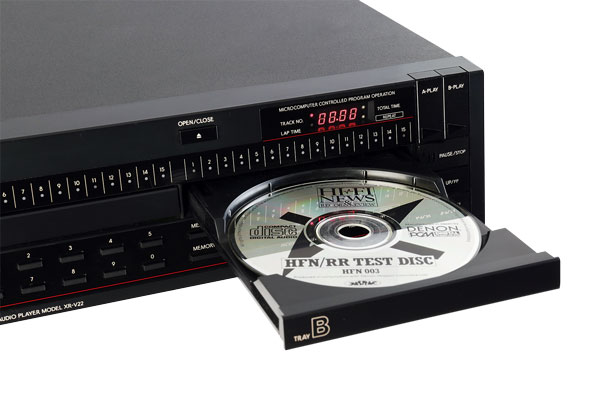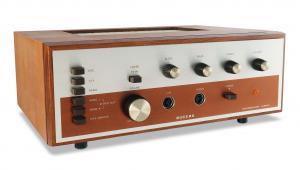Toshiba XR-V22 CD player

 Gimmick or grand plan as Toshiba looks to spice up the mid-’80s CD scene with a
dual-disc player offering over two hours of continuous music. How does it fare today?
Gimmick or grand plan as Toshiba looks to spice up the mid-’80s CD scene with a
dual-disc player offering over two hours of continuous music. How does it fare today?
Anumber of our recent Vintage Reviews have featured CD players designed to broaden the appeal of the format by making the hardware available at progressively lower price points. This was one way to maintain sales, but another approach was to add additional features at little or no extra cost.
The big Japanese manufacturers had already applied this strategy to VCRs, piling on the technology in a bid to keep the public interested in new models which, in real terms, were no more expensive than the earlier, far less sophisticated ones. When it came to CD, one obvious avenue to explore was better sound quality. However, to most buyers, the discs sounded more than good enough already, so for mass market consumers this would have been a hard sell. What was needed was something more obvious.
Twin-Tray Triumph
Double cassette decks had proved to be popular in the middle sector of the market so how about the same thing for CD? This was the thinking behind Toshiba’s XR-V22, the first twin-tray CD player and (as far as we know) the first multi-CD player to be released onto the market anywhere. Clearly a twin-tray machine could not, at this stage in the format’s history, do the most important thing a double cassette deck could, which was to copy from one side to the other. Recordable CDs were still years away, but there was still the possibility to either play a complete concert spread across two discs without interruption, or play a choice of material from any two discs as one continuous programme.
In theory, nearly two-and-a-half hours of non-stop high-quality listening could be enjoyed, something that was difficult with cassettes since only a few double decks offered auto reverse in both positions, and impossible with LPs, even when using the dreaded autochangers of yore.
The easiest way to produce a twin-tray CD player would have been to simply use two complete mechanisms. The price, though, would have been prohibitive. The precision laser optical block was still the most expensive single item in any player and this, combined with other mechanical parts, represented a major component in the manufacturing costs of a machine.

A small red alphanumeric display above disc tray B reveals – in sequence – the track number, total disc time and
total track time. What more do you need?
Slip ’n’ Slide
From a technical point of view there would have been problems too. In early players such as this, the servo circuits had to be carefully set up to match the exact characteristics of the individual optical unit, so this circuitry would also have to be duplicated. Toshiba’s solution sidestepped all these problems. Two motorised trays were still needed, but beneath them the complete CD transport could slide from one to the other, powered by another small motor. The only complication this arrangement introduced was that the action of the drawer and the clamping of the disc onto the turntable had to be separated. In other low-cost players these two functions had now been combined in the interests of simplicity. The complete mechanism of the XR-V22 was therefore realised with one optical deck, some straightforward mechanical parts and four motors, which was something that could be constructed within a manageable budget.
The XR-V22 was ready and in the shops by the autumn of 1985. It was priced at around £370 when a Sony CDP-30 [HFN Sep ’19] or a Yamaha CDX-2 were £300 and offered a similar level of audio performance. The cost of the twin trays was therefore an extra £70, a fair price but one it seems few were interested in paying as the machine proved to be a slow seller.


















































